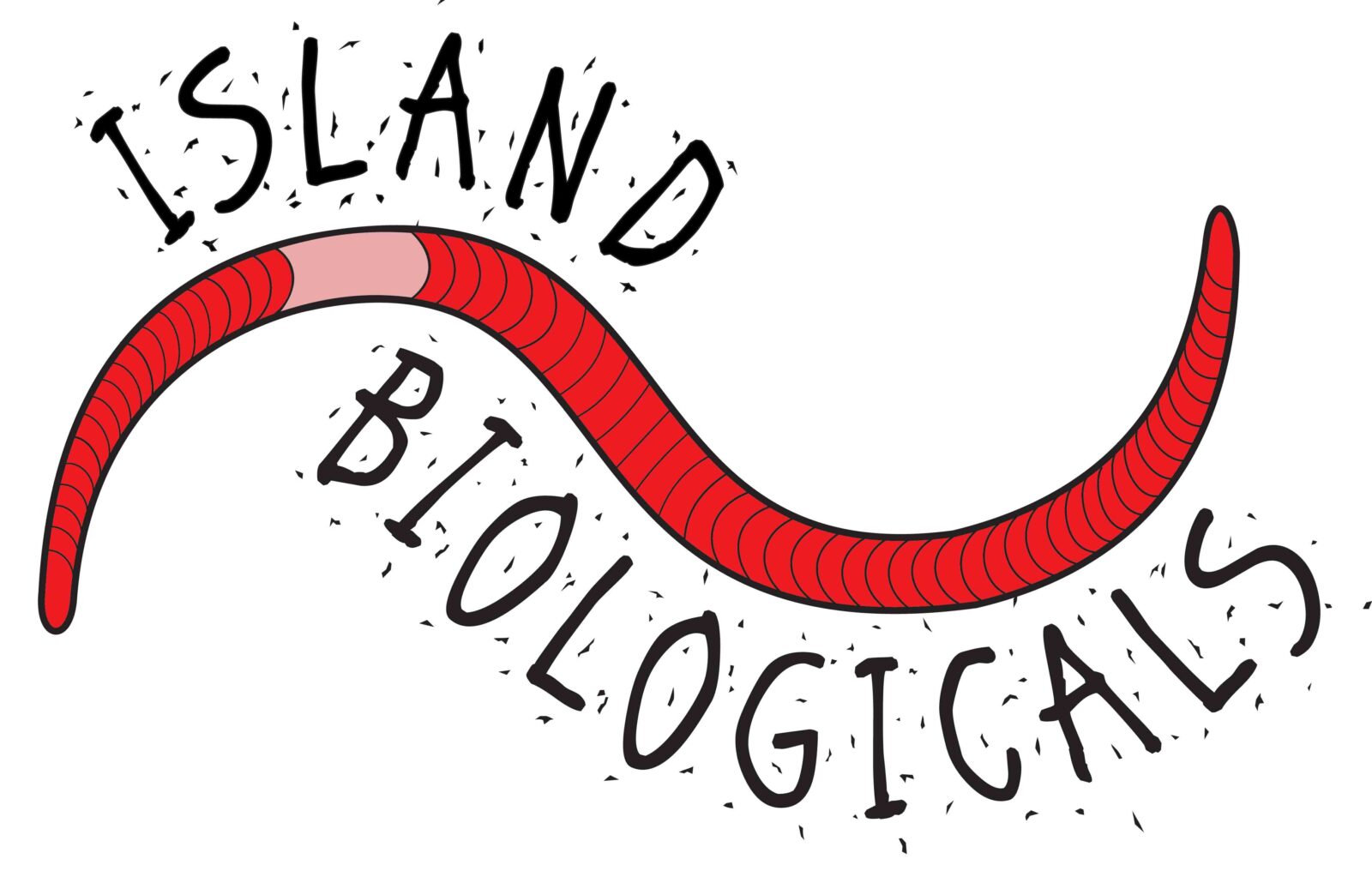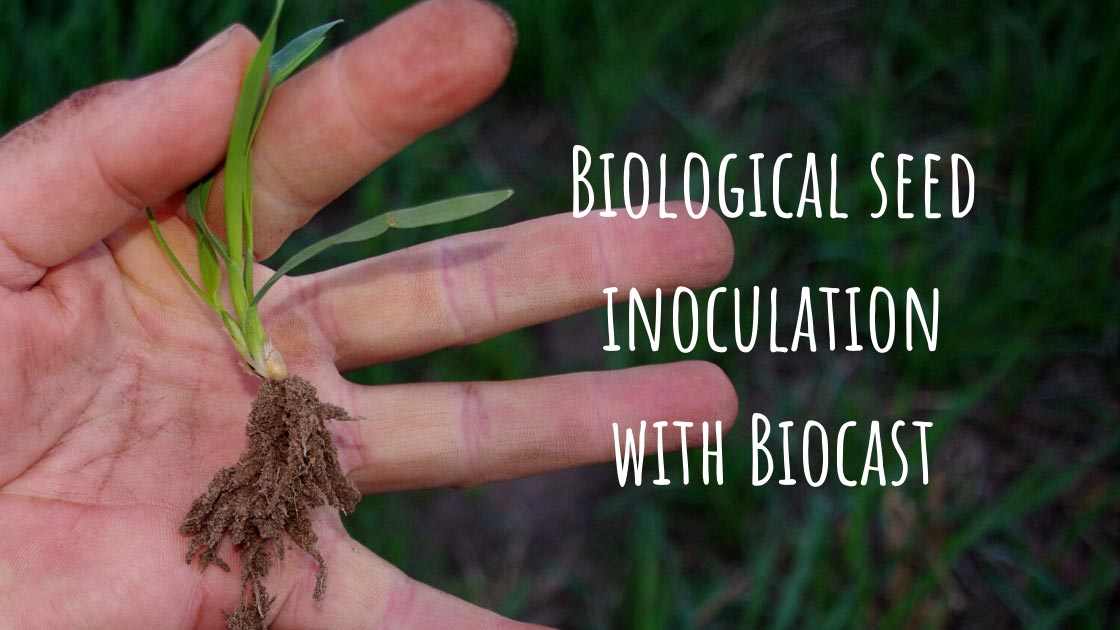
Biological seed inoculation
If you are putting out seed, and want it to germinate into a robust and healthy seedling in a cost-effective way, then a biological seed inoculation with a living product such as Biocast is a great option. This post gives some background on the role of microbes in seed germination and seedling establishment, shows some examples from Biocast users, and gives instructions for how to use Biocast as a seed inoculant. If you’re short on time and just want the how to, scroll down two thirds.
What we’re talking about when we say ‘biological seed inoculant’ is simply a form of seed coating. It is exposing the seed to beneficial microbes and their growth-inducing signals by lightly dosing them with a living substance, such as our vermicast extract Biocast, which is a stable, fungally-dominant product with diverse living microbes. You could use high quality compost extracts such as Johnson Su, indigenous microorganisms from Korean Natural Farming, or another commercial product.
Key benefits of seed inoculation with Biocast
From our observations, the main benefits of using Biocast as a seed inoculant are:
- The seed grows roots before shoots, giving it resilience to above ground conditions.
- The roots have a relationship with beneficial biology straight away, as seen by the formation of dredlocks on seminal roots. Read on for why this is important and see our post here.
- It is a low cost and product-efficient way of adding beneficial microbes to your soil.
Inoculating seed with beneficial microbes gives young plants a great start to life, within the context of their landscape. What happens next depends on a multitude of factors, including your soils, the season, and other management decisions!
For those interested in what’s going on under the microscope, let’s unpack what’s going on, based on current science.
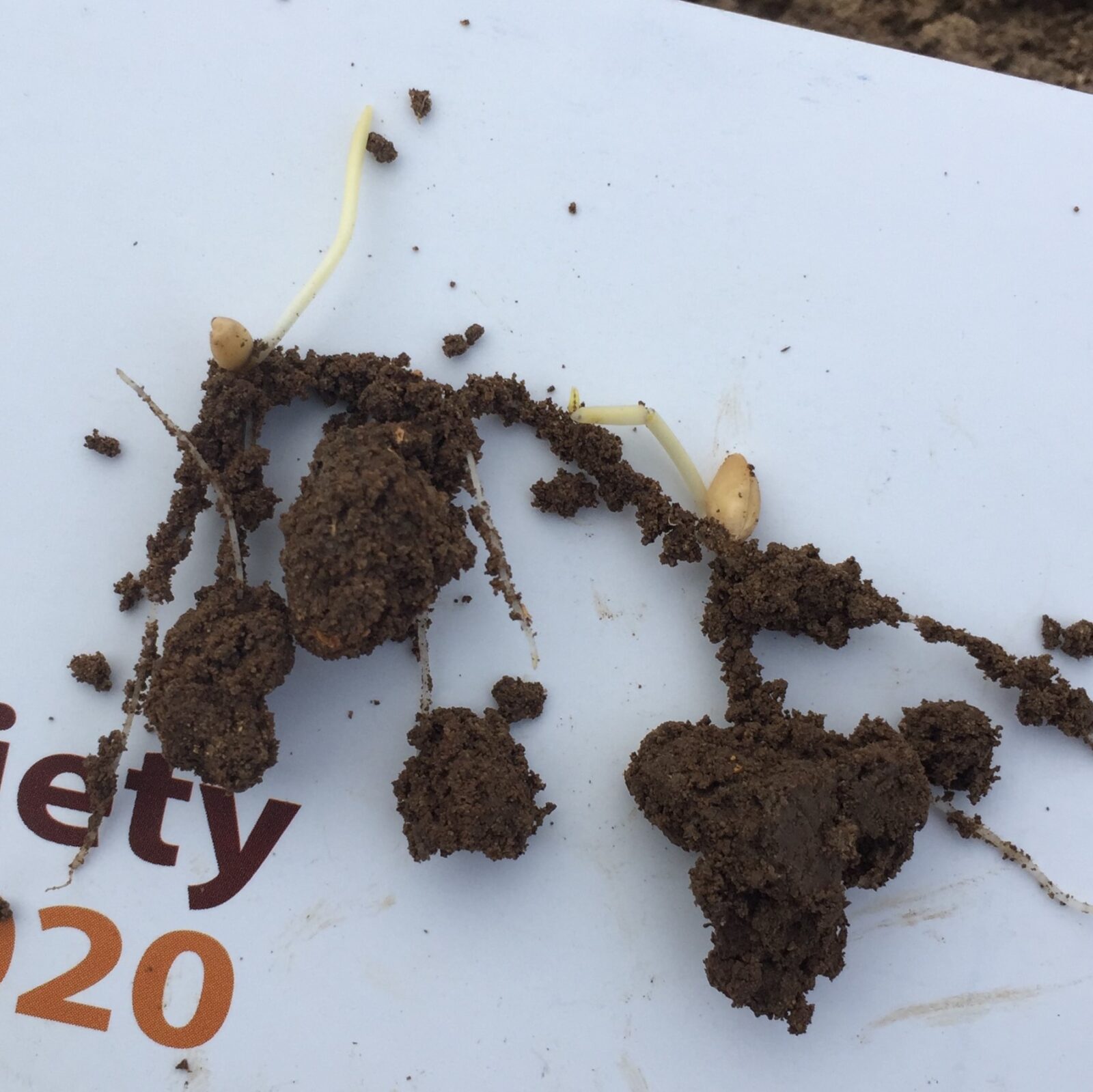
Joel’s wheat and barley crop (Walgett) was inoculated with Biocast. Photo showing seedlings at 5 days post planting. Note size of roots and dredlock formation.
Did you know that seeds have their very own core microbiome?
[NB. We’re going to chuck a heap of hyperlinks in here – they are to articles on PubMed unless otherwise stated, for those interested in the science.]
The microbiome within a plant is called the ‘endosphere’, and healthy seeds come with their own little microbe starter pack of beneficial bacteria. Nature has a whole host of reasons for doing this, which science has been starting to uncover only in the past few years (most papers on the endosphere are 2015+) . They include promoting growth (for example via hormone modulation and help accessing nutrients), helping to overcome fungal pathogens, and assisting the plant to adapt to local conditions. I love this sentence by Rahman et al.: “Seeds are reservoirs and vectors for beneficial microbes, which are very intimate partners of higher plants with the potential to connect plant generations.”
In his excellent podcast with John Kempf, Dr James White explains that the endosphere of some seeds is more easily damaged than others. For example, the practice of delinting cotton seed effectively sterilises it (and weakens the subsequent crop, leading him to question the practice); whereas the wheat microbiome is internal and protected by a tough husk, giving it more resilience. This makes one potential application of seed inoculation helping seeds to overcome microbiome damage or generational depletion of their microbiome thanks to modern anti-microbial farming practices. (NB. that’s our theory, we’re watching Dr White’s work in this space!)
In fact, the whole plant has an endosphere.
Something Dr White also discusses in that podcast is that microbes (predominantly bacteria and fungi) live between cells WITHIN plants, from root to tip. Here’s a quote from his 2019 co-written paper ‘Review: Endophytic Microbes and Their Potential Applications in Crop Management‘:
“Endophytic microbes are often functional in that they may carry nutrients from the soil into plants, modulate plant development, increase stress tolerance of plants, suppress virulence in pathogens, increase disease resistance in plants, and suppress development of competitor plant species. Endophytic microbes have been shown to: (i) obtain nutrients in soils and transfer nutrients to plants in the rhizophagy cycle and other nutrient-transfer symbioses; (ii) increase plant growth and development; (iii) reduce oxidative stress of hosts; (iv) protect plants from disease; (v) deter feeding by herbivores; and (vi) suppress growth of competitor plant species.”
Though a single species study, this paper suggests that around 70% of endophytic root microbes can come from the surrounding soil. Therefore, another potential role for biological seed inoculation is to provide the growing plant, once sprouted, with a source population for a healthy endosphere for all its many functions. In theory, this role will be most pronounced in disturbed soils with depleted microbiology.
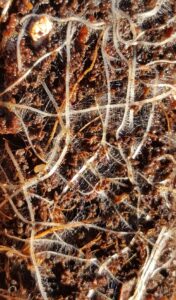
Dense root hairs on a wombok seedling grown in in a worm cast mix
Microbes assist seedling establishment
Let’s look more closely at that term ‘rhizophagy cycle’ mentioned above, because it’s new and fascinating research, and it has really important implications for how well your baby roots develop! White et al. have a detailed paper on it here but in essence plant root tips absorb microbes from the soil, dissolve the cell walls and extract nutrition. Then surviving microbes stimulate the growth of root hairs through which they exit, to live within the zone (the rhizosheath) fed by root exudates (sugars) and begin the cycle again. This rather blurs the line between what is endophytic or not! So, microbes promote root growth in such a way that the plant gains a huge amount more surface area and access to nutrition, and helps builds that all-important rhizosheath. When you dig up a plant it will look like soily dredlocks on the roots, which we’ve written more about here. Indeed, this is our key indicator on whether the seed inoculation worked and whether there’s a beneficial plant-microbe association.
Signals for life
Potentially the most important part of biological seed inoculation is the autoinducers. These are chemical signaling molecules, produced by microbes, used for communication with other microbes. They play a big role in quorum sensing, which, in a nutshell, is microbes seeing whether there are enough of ‘us’ to do whatever it is ‘us’ wants to do. In the case of seeds, microbes on the outside of the seed, either from the soil or the inoculant, are communicating with the microbes within the seed. We assume they’re telling them about where they’re about to sprout, perhaps which genes need to be switched on or off, who’s who in the zoo.
Very interestingly, it appears that they tell the seed which way is up! Dr Christine Jones discusses how seeds planted into sterile soil typically sprout any which way, and end up with a small root mass running along the surface, and proportionally greater leaf area. You can imagine that such sprouts have little resilience to weather, pest and grazing conditions. What we see where there are healthy microbial populations is the seed germinating with roots first, sending them deep into the ground before there is any leaf development. Not only that, but these roots have thick rhizospheres (dredlocks, see photos below), showing that the germinating seed is exuding sugars from the root and feeding microbes. This is a very interesting move for an organism which gets energy from photosynthesis! It appears that the new plant is donating its first carbohydrates to consolidating that underground relationship with beneficial microbes, cultivating an environment where it will have good air and water conditions, nutrient access, protection against pathogens, pH and heavy metal buffering and more. We can learn a lot from Nature’s priorities.
Worth noting is that the addition of water soluble fertilisers (including nitrogen) sees that seed germinate in a way resembling the sterile scenario. Small, clean roots, few/ no root hairs and limited relationship with any soil microbes. Seeds with ‘-icide’ coatings the same. Fungicides? Not if you want healthy plants in humus-rich soil. Insecticides? In this eye-opening clip Nicole Masters shares that for every 1 insect pest there are about 1200 beneficial ones, and the unforseen/ unintentional negative impacts of seed dressings such as neonicotinoides are enormous.
If you have pest problems triggering the use of pesticides and also want the benefits of a healthy microbial population, all is not lost. Research (such as this) is starting to look more closely at the hows and wherefores of pest suppression by working WITH microbiology, with promising results. Or research such as the Jena experiment showing that productivity and resilience to an array of stressors can increase enormously simply through utilising biodiversity. Dr Christine Jones talks a lot about how working with diversity and microbiology can produce better yields than any amount of added nitrogen could produce (this talk, and this talk, for example). The question we can ask, starting with the seed, is: are we giving it the signal for life?
Case studies
Much of what is discussed above is in the realms of new science, and many papers make reference to the fact that there’s still so much we don’t know (such as this recent one on improving drought resilience in crops). At the end of the day what we really want to know is, does microbial seed inoculation work in the field?
Firstly, we would like to acknowledge the pioneering work done in Australia on biostimulant seed coatings by NutriSoil, and by Ian and Di Haggerty who have used it to incredible effect under very challenging conditions in WA (this video by Smartsoil Media is a great overview of their operations).
We have also seen excellent results using Biocast. Can we guarantee this will happen at your place? Absolutely not. It is no silver bullet, but rather pairs well with other regenerative practices to kick start biological processes. The relatively low cost, and the amount of photos we get from people who are pumped about their plant’s dreddies, leads us to believe that biological seed inoculation has an exciting future in agriculture, and we look forward to learning more and being able to refine our advice.
The following example are all from the first half of 2020.
Joe, Tamworth
Joe used Biocast as seed inoculant for his oat and barley crop, with no other inputs.
He tells us that this was the first biological application on a conventional system starting to convert to a regenerative system and “there would be bugger all else going on in my dirt.”
Biocast was applied at 10 L/ tonne. Joe has planted 4.5 t seed over 65 ha at a cost of $3.04 / ha
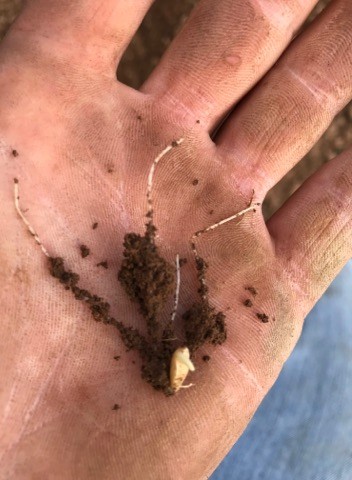
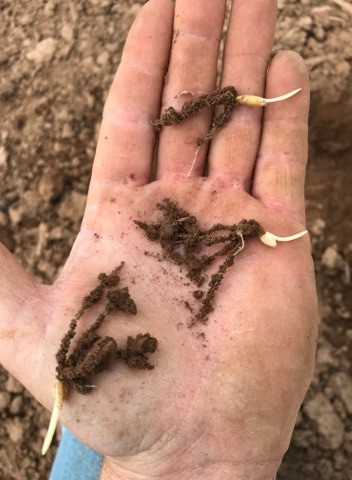
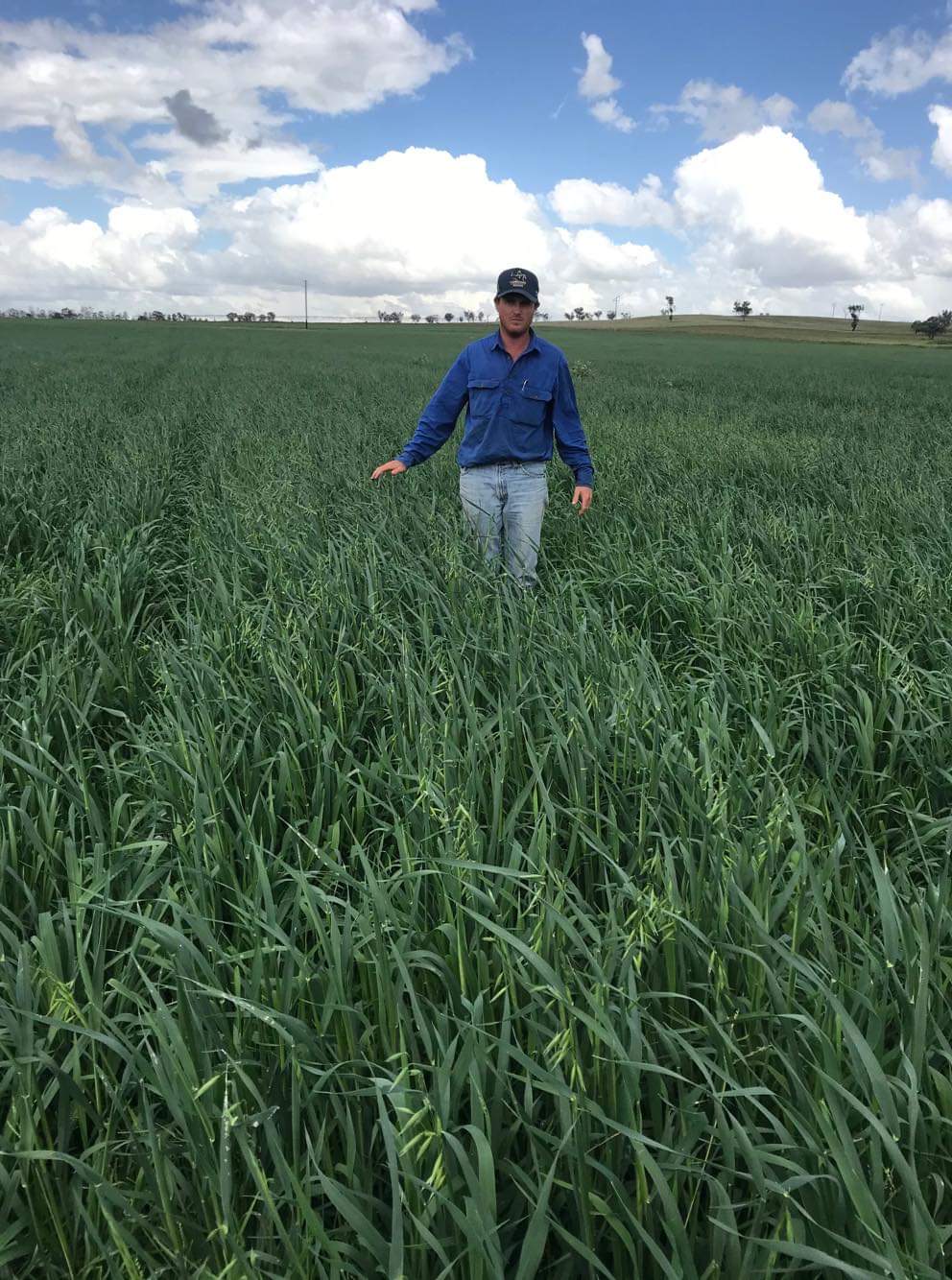
Nick and Alex, Gunnedah
Cereal crop inoculated with Biocast and planted into a crimped multi-species fodder paddock.
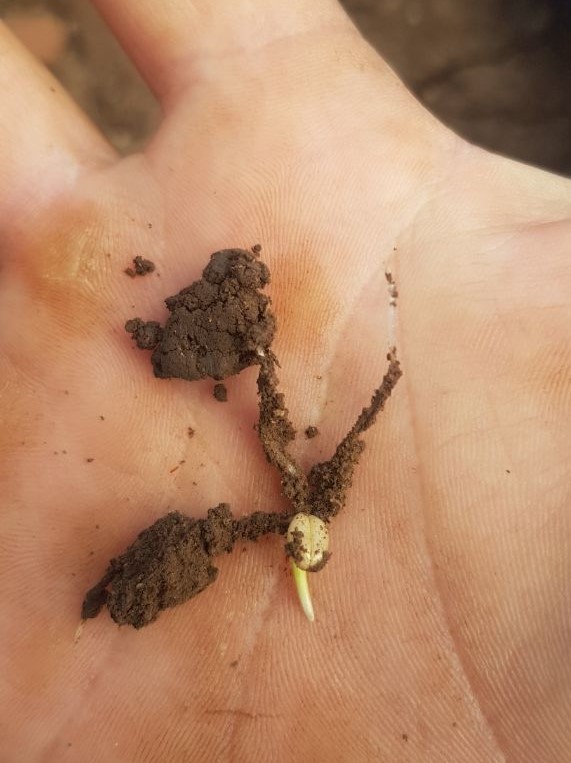
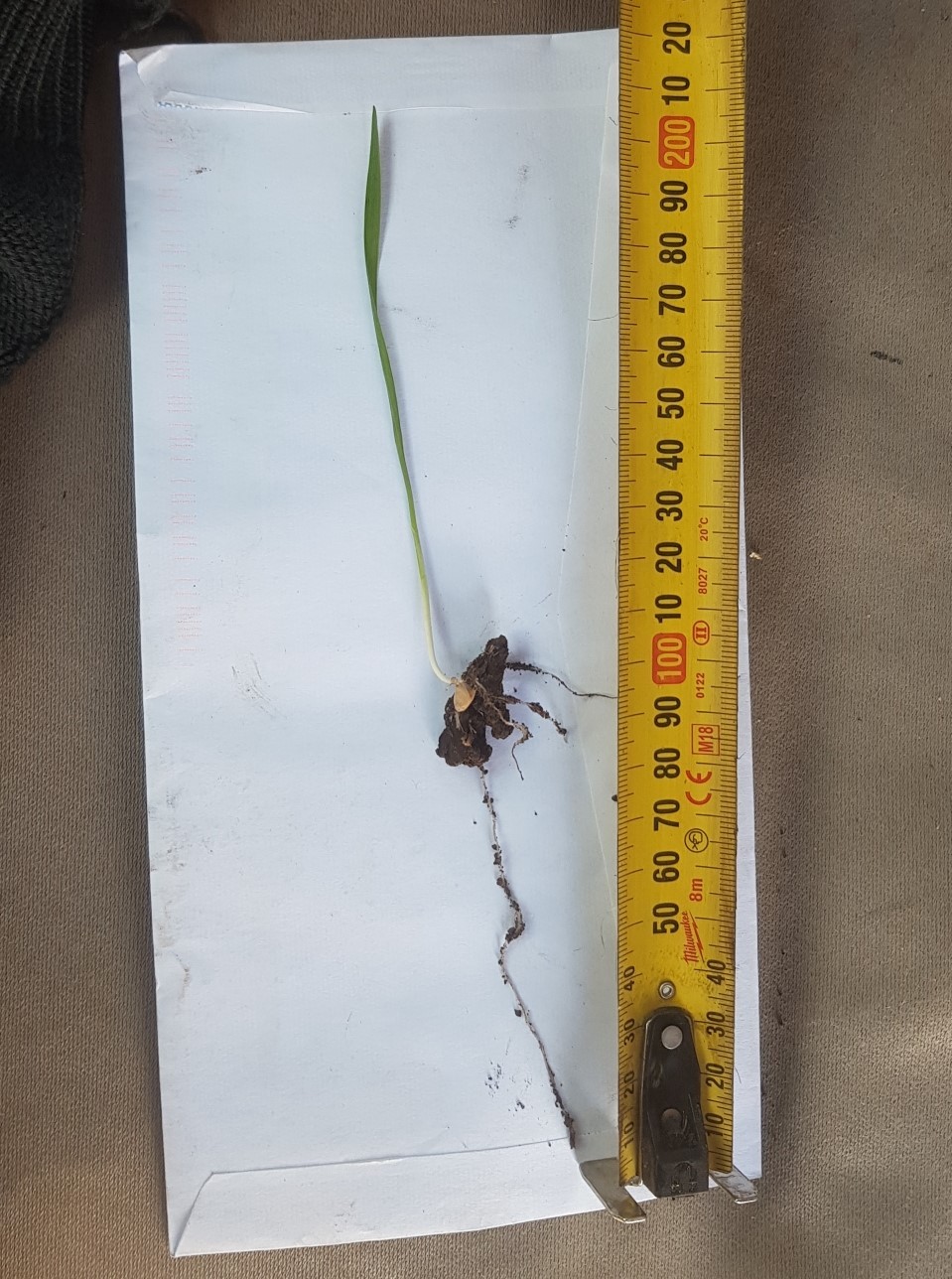
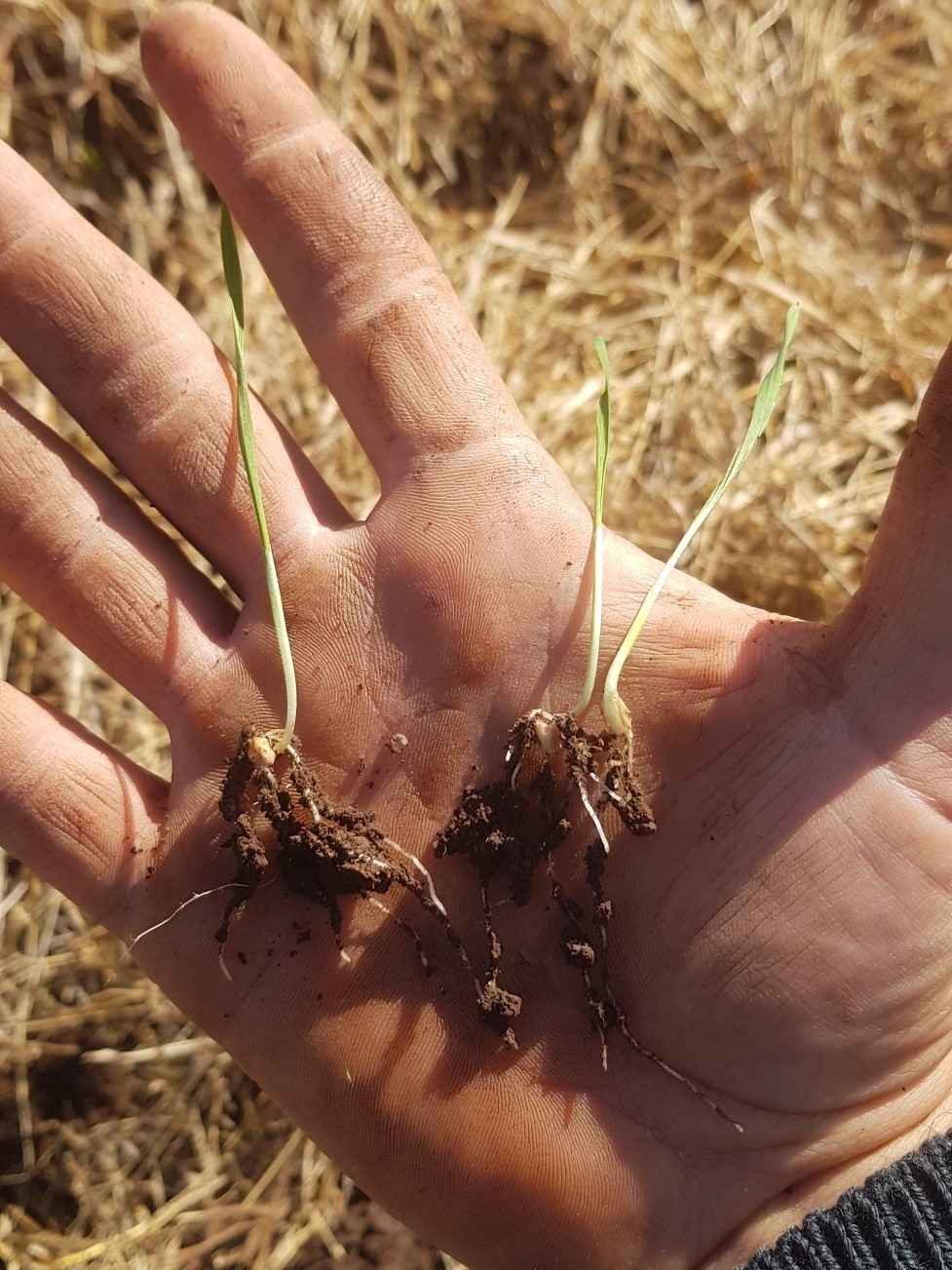
How to inoculate your seed with Biocast
You will need:
- Uncoated seed
- Biocast Part A and Part B
- Something to mix them together in/ with
Method:
- Depending on the mixing method you choose (see notes below) and what species of seed your are planting, you will need 5-10 L Biocast per tonne of seed (i.e. not very much). Mix Biocast Part A and B as per general mixing instructions (50:1). Do not add water.
- Add the mixed Biocast part A and B to your seed and mix until it is contact wet. It does not need to be saturated. For example, if you are mixing in a bucket there wouldn’t be any liquid pooling in the bottom – you use just enough to coat the seeds. It’s so little that the seeds will be dry again in a couple of minutes. See the video below for a visual of what we mean.
- Plant your seed!
Notes:
Starting with uncoated/ untreated seed will give you the greatest benefit of the living biology. Many seeds today are coated with things like anti fungals and insecticides, which will kill the beneficial microbes you are trying to add, not to mention the damage they do to your soil biology and wider food web (of which we are a part). If you do choose a coated seed with Biocast you may get the benefits of the autoinducers, but we make no promise about being able to repair any damage those chemicals could cause. You may have to ask around for untreated seed. Let us know if you have trouble.
The mixing method you use will depend on your circumstance.
- At home we use the trusty bucket and mix by hand to get the feel of it. This is good for smaller quantities.
- Biocast users who have the greatest efficiency use a long seed auger.
- Cement mixers work well.
- We have others turning piles on the shed floor with shovels.
- We are huge fans of incorporating Biocast and planting in one step, like out mate Tom in this video. He has rigged up a liquid injector to his direct drill seeder, so the seeds get coated as they go in the ground. This article in ‘The Land’ shows a similar example with great results by Richard, also written about on their website here.
A word on calcium availability
Calcium is essential to the form and functioning of microbes. What this means is that if you have a calcium deficiency you won’t see the same degree of benefit from biological seed inoculation as where it isn’t a limiting factor. This is certainly the case for us in our home garden! Something we are trialing, with great success, is to add micro fine lime to the seed with the Biocast inoculant, so you have an additional coating at planting. In the home garden cover crop it has the added benefits of soaking up the excess liquid (oops, happens easily with small quantities); and being a visual indicator of where the seeds have been spread. If you know you have low calcium, or you’re not getting the results you’re expecting from the microbiology, this is something to play with. You will need to add enough for it to be a dry mix, not resembling wet cement.
A different way of thinking about growing
Finally, biological seed inoculation carries a mindset which may come as a big shift for many people, especially if your background is in conventional ways of growing. Getting the most out of it requires us to trust the ‘intelligence’ of the germinating plant and have faith in these microbes that we can’t even see with our bare eye to support it. We find that plants grow to environmental conditions, not market deadlines or some other factor that we feel we can have some control over in conventional systems. The Haggertys in particular have great stories of inoculated plants seeming to underperform their chemically reinforced neighbours, until they explode into abundance with a bit of rain and romp it home, where the others may not have even obtained a yield. It involves shifting priorities to plant health and nutrition, rather than conventional measures such as dry mass, and trusting that the plant will deliver the most vigourous version of itself in prevailing conditions. It is about the grower then managing those conditions and using plant response (including pest pressure and nutrient deficiencies) as direction signs. It can be tough to make this shift! But the potential of working with the plant and soil as partner rather than commander is looking more and more rational and productive by the day.
We would love to hear your stories of seed inoculation with Biocast! Better yet, show us your dreddies! Send them to Lee, it will make his day.
For other ways to support plant health using Biocast see this page.
If you’d like to give seed inoculation a try, Biocast can be purchased here. If you have any questions at all just contact Lee!
